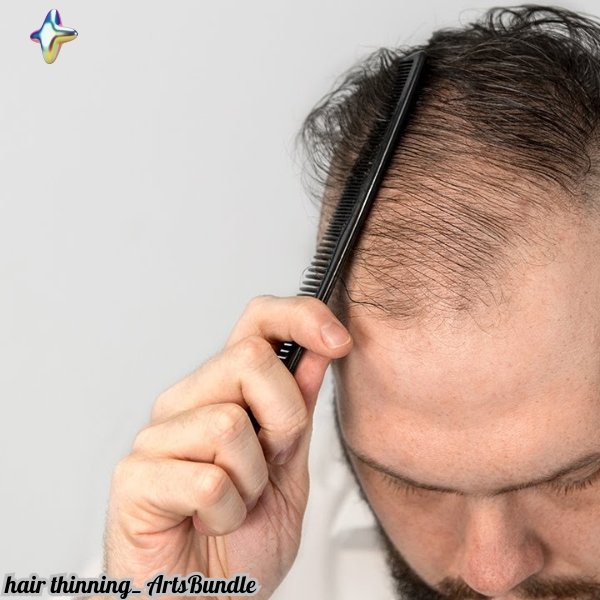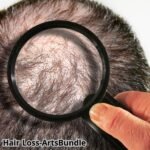Are you losing more hair than you’re comfortable with and wondering if there’s hope for hair restoration? You’re not alone—hair thinning affects many men and women. This guide explores seven proven methods to restore hair and promote healthy growth. You’ll learn about the causes of hair loss, medical treatments, lifestyle changes, and natural remedies—all backed by research—to help you manage and possibly reverse hair thinning.
Causes of Hair Thinning
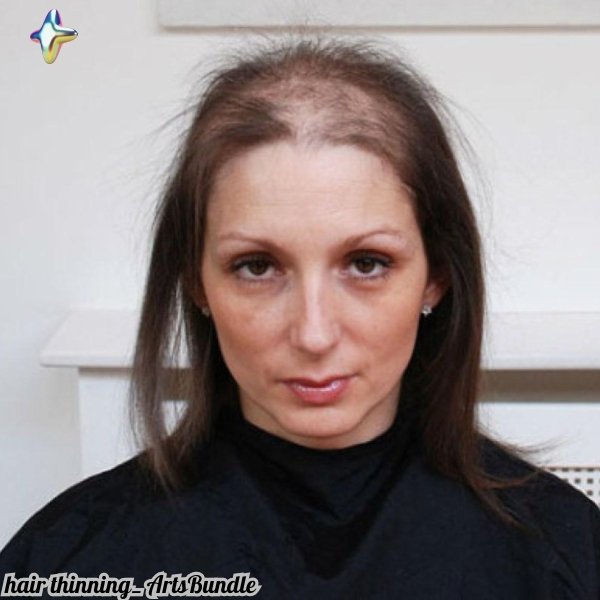
Hair thinning is a common issue affecting millions globally. Knowing what causes alopecia helps in fighting hair thinning and baldness.
1)Genetic Factors and Hormonal Imbalances
Androgenetic alopecia is the leading cause of hair loss. It affects over 50 million men and 30 million women in the U.S. This genetic condition leads to hair loss in specific patterns:
- Male pattern baldness starts at the forehead hairline.
- Female pattern hair loss begins with thinning at the crown or widening of the part.
- Genetics greatly increase the risk of hair loss.
2)Medical Conditions Contributing to Hair Loss
Medical issues can also cause hair thinning. Some main causes include:
| Medical Condition | Hair Loss Impact |
| Thyroid Disorders | 25% of patients experience hair thinning. |
| Autoimmune Diseases | Can cause patchy or total hair loss. |
| Diabetes | Increases risk of circulatory-related hair loss. |
3)Environmental and Lifestyle Triggers
External factors greatly affect hair health. Stress, nutrition, and daily habits play a big role in hair growth and retention:
- Chronic stress may trigger hair shedding months after a traumatic event.
- Nutritional deficiencies in iron, protein, or zinc can cause hair loss.
- Certain medications might contribute to temporary or permanent hair thinning.
Knowing these factors helps you take steps to manage and prevent hair loss.
The Science Behind Hair Growth Cycles
Understanding hair growth is key to managing hair shedding and maintaining healthy hair follicles. The human scalp has about 100,000 hair follicles. These follicles go through a natural cycle of growth and renewal.
Hair growth is a complex process with four distinct phases:
- Anagen (Growth Phase): The active growth stage lasts 2-7 years.
- Catagen (Transition Phase): A short period where hair follicles shrink.
- Telogen (Resting Phase): When hair stops growing, lasting up to 4 months.
- Exogen (Shedding Phase): When old hair falls out and new hair begins to grow.
Every day, people shed between 50 and 100 hairs, which is normal. Stress, nutrition, and health can affect hair growth. They can disrupt the natural phases of hair growth.
| Hair Growth Phase | Duration | Characteristics |
| Anagen | 2-7 years | Active growth, ~1 cm per month |
| Catagen | 2-3 weeks | Hair follicle shrinkage |
| Telogen | Up to 4 months | Hair rests before shedding |
| Exogen | 2-5 days | Hair falls out, new growth begins |
Chronic stress can harm hair follicles. It can keep them in the inactive telogen phase longer. This disrupts normal hair growth patterns.
Medical Treatments and Professional Solutions
Hair thinning can be tough for many. Now, there are advanced medical treatments to help. These options can help you manage hair loss better.
1)Prescription Medications for Hair Restoration
Two main FDA-approved medicines are making a big difference:
- Minoxidil is an over-the-counter treatment that can help lengthen the hair’s active growth stage.
- Finasteride: A prescription medication targeting DHT blockers to reduce hair loss progression.
Minoxidil shows great results, with about 40% of users seeing hair regrowth in 3-6 months. Finasteride helps stop hair loss and promotes growth in about 66% of men.
2)Hair Transplant Procedures
Hair transplant techniques have changed hair restoration. These surgeries move hair follicles from thick areas to thin ones. With an 80% success rate, they offer hope for those with a lot of hair loss.
| Treatment Method | Success Rate | Average Duration |
| Minoxidil | 40% | 6-12 months |
| Finasteride | 66% | 4-6 months |
| Hair Transplant | 80% | Permanent |
3)Low-Level Laser Therapy Options
New tech like low-level laser therapy offers fresh ways to restore hair. Studies show it can wake up hair follicles and help them grow. You might need 8-10 sessions over weeks to see results.
Remember, talking to a healthcare provider is key to finding the right hair restoration plan.
Natural Remedies for Hair Thinning
Hair thinning can be tough, but natural remedies offer hope. They are great for those looking for hair restoration without harsh chemicals. Knowing why hair falls out is key to finding the right natural treatments.
Essential oils are powerful for hair thinning. Studies show some oils can help:
- Rosemary oil: Helps with alopecia symptoms.
- Pumpkin seed oil: Stops DHT formation.
- Lavender and thyme: Might wake up hair follicles.
Research gives us good news about growing hair naturally. Men taking 400 mg of pumpkin seed oil a day saw a 40% increase in hair count. This is more than the 10% increase in the placebo group.
| Natural Remedy | Potential Benefits | Study Findings |
| Pumpkin Seed Oil | DHT Blocking | 40% Hair Count Increase |
| Onion Juice | Hair Growth Stimulation | Increased Growth Signs |
| Olive Oil | Scalp Health | 3,000 Years of Traditional Use |
What we eat affects our hair. A balanced diet is vital to prevent hair thinning. Important nutrients include:
- Iron.
- Folic acid.
- Riboflavin.
- Zinc.
- Selenium.
While natural remedies are promising, always talk to a doctor before trying them. Everyone’s hair loss is different. Personalized treatments work best.
Essential Nutrients and Dietary Changes for Healthy Hair
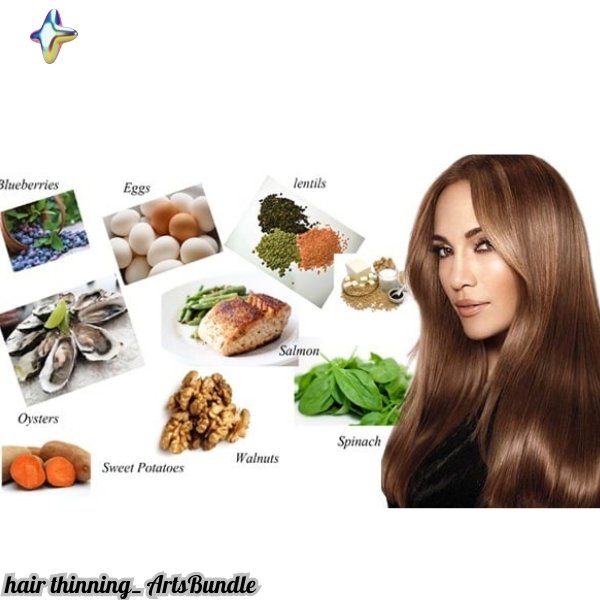
Keeping your scalp healthy starts with what you eat. Your diet is key to growing strong hair and stopping hair loss. Knowing the right nutrients can make your hair stronger and more vibrant.
Important Vitamins and Minerals
Some vitamins and minerals are vital for healthy hair. Key nutrients for scalp health include:
- Vitamin D: Critical for hair follicle cycling.
- Vitamin C: Supports collagen production.
- Vitamin E: Protects hair follicles from oxidative stress.
- Iron: Prevents hair loss through improved oxygen transport.
- Zinc: Supports protein synthesis for hair growth.
Protein-Rich Foods for Hair Growth
Protein is the base of hair. Lean protein sources can greatly improve hair quality and growth:
- Eggs: Rich in biotin and protein.
- Fish: Provides omega-3 fatty acids.
- Lean meats: Delivers essential amino acids.
- Legumes: Offers plant-based protein alternatives.
Supplements and Their Effectiveness
Even with a good diet, some supplements can help scalp health. Recommended supplements include:
- Biotin: Supports keratin infrastructure.
- Vitamin D: Recommended 2,000-5,000 IU daily.
- Omega-3 fatty acids: Promotes hair density.
Always talk to a healthcare professional before starting supplements. This ensures you get the right support for your scalp health.
Scalp Care and Hair Maintenance Techniques
Keeping your scalp healthy is key to stopping hair thinning and boosting hair growth. Your scalp is where healthy hair follicles start. Knowing how to care for it can make your hair look better and be stronger.
Things around us can hurt our scalp. Air pollution and dust can cause damage. This can lead to:
- Persistent itching.
- Dandruff development.
- Reduced hair follicle performance.
Stress also affects our scalp. High cortisol levels can cause inflammation and harm hair follicles. Studies show that stress makes hair more likely to fall out.
There are simple ways to take care of your scalp every day:
- Gentle daily scalp massage to stimulate blood circulation.
- Use of pH-balanced hair products.
- Regular hydration.
- Protecting scalp from excessive sun exposure.
What you eat matters too. Omega-3 fatty acids and enough water keep hair follicles healthy. Drinking four to six cups of water a day helps keep your scalp moist and supports hair growth.
By using these scalp care tips, you can help your hair grow strong and prevent thinning.
Lifestyle Modifications to Prevent Further Hair Loss
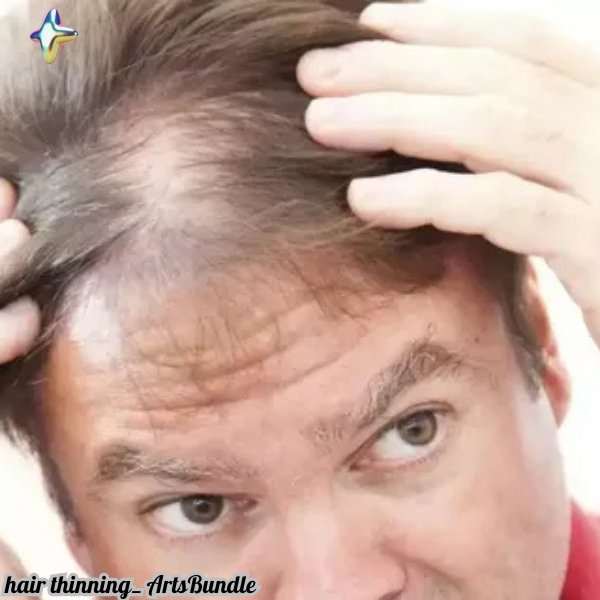
Preventing hair loss is more than just medical treatment. Your daily habits are key to keeping your hair healthy. Knowing how lifestyle choices affect your hair helps you fight thinning and boost hair health.
1)Stress Management Strategies
Stress can lead to hair loss. Studies show that stress makes hair follicles rest, causing more shedding. To reduce stress, try:
- Daily meditation practices.
- Regular yoga sessions.
- Deep breathing exercises.
- Consistent sleep schedules.
2)Exercise and Sleep Habits
Exercise and good sleep are vital for hair health. A 2016 study found that a 4-minute scalp massage can boost hair growth. Exercise helps blood flow, which is good for hair follicles.
| Activity | Hair Health Impact |
| Moderate Exercise | Improves blood circulation to scalp |
| 7-9 Hours Sleep | Supports hormone regulation |
| Scalp Massage | Potentially stimulates hair growth |
3)Harmful Practices to Avoid
Some habits can make hair loss worse. Protect your hair by avoiding:
- Excessive heat styling.
- Tight hairstyles cause tension.
- Smoking.
- Crash dieting.
- High-stress environments.
Preventing hair thinning is a whole-body effort. Mix stress management, good nutrition, exercise, and gentle hair care for better hair health and look.
Proper Hair Care Products and Styling Methods
Dealing with thinning hair means picking the right products and styling gently. Knowing what fragile hair needs can help avoid damage and encourage growth.
Choosing the right products is key when fighting hair thinning. Fine hair needs special care to avoid breakage and keep it looking full.
Essential Hair Thinning Care Recommendations
- Select sulfate-free shampoos designed for thinning hair.
- Use volumizing conditioners that don’t weigh hair down.
- Avoid high-heat styling tools.
- Limit chemical treatments.
Professional volumizing products are great for thin hair. They offer strong support without stressing the hair. Special shampoos can also help make hair thicker and reduce damage.
Styling Techniques for Thinning Hair
| Technique | Benefit |
| Low-heat styling | Minimizes hair damage |
| Gentle blow-drying | Prevents breakage |
| Soft brushing | Reduces hair stress |
For those with thinning hair, smart styling can make hair look thicker. Getting advice from a stylist can help find the best methods for your hair.
Remember: Daily scalp massage and careful product selection can significantly improve hair health and appearance.
Alternative Therapies and Emerging Treatments
The world of hair restoration is always changing. Now, people have new ways to deal with thinning hair. These new treatments are more advanced than old methods.
1)Platelet-Rich Plasma Therapy: A Revolutionary Approach
Platelet-rich plasma (PRP) therapy is a new hope for hair thinning. It uses your blood to help your hair grow. Studies show it could help with hair loss.
- Involves concentrating platelets from the patient’s blood.
- Stimulates hair follicle regeneration.
- Minimal invasive procedure.
Research on PRP therapy is very promising:
| Treatment Aspect | Effectiveness |
| Hair Growth Potential | 64.5% positive response |
| Growth Factor Stimulation | Promotes cell proliferation |
| Treatment Duration | Multiple sessions recommended |
2)Essential Oils: Natural Path to Hair Regrowth
Natural essential oils are an intriguing alternative for hair care. They can help your hair grow naturally. These oils work in different ways to support hair health.
- Potential to improve scalp circulation.
- Natural anti-inflammatory properties.
- May support hair follicle health.
Even though new treatments are promising, it’s important to talk to a doctor. They can help you find the best way to restore your hair.
Hair Growth Timeline and Expected Results
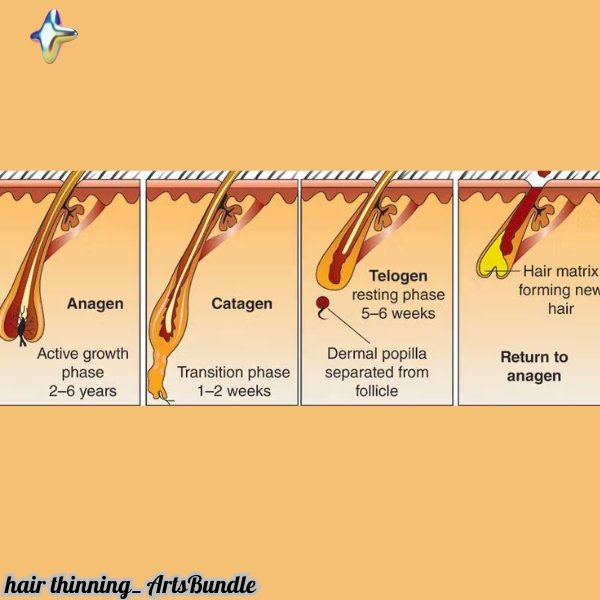
Understanding hair regrowth takes patience and realistic hope. Hair restoration is a journey that changes for everyone. Scalp hair grows about half an inch each month. Most people grow about 6 inches of hair a year.
Hair Growth Cycle Breakdown
| Growth Phase | Duration | Percentage of Hair |
| Anagen (Active Growth) | 2-8 years | 85-90% |
| Catagen (Transition) | 2-4 weeks | 1-3% |
| Telogen (Resting) | 2-3 months | 9-15% |
When you start hair restoration, timelines vary by treatment. Topical treatments like minoxidil show results in 3-6 months. Hair transplantation might take up to two years for full results.
- Early treatment boosts hair growth chances.
- Regular treatment is key to the best results.
- Many factors affect hair restoration success.
Keep track of your progress with photos and professional checks. This helps you stay motivated and understand your hair growth journey.
Things that affect hair growth include age, genetics, health, and treatment choice. Eating right, managing stress, and using specific treatments can improve your hair restoration results.
When to Seek Professional Help
Knowing when to see a doctor about hair loss is key. By the time most people notice thinning, half of their hair follicles might be affected. Early action can greatly improve treatment outcomes for alopecia and hair loss.
It’s important to watch for warning signs to know when to seek help:
- Daily hair shedding exceeds 150 strands.
- Sudden or patchy hair loss.
- Visible scalp thinning.
- Family history of progressive hair loss.
- Accompanying scalp inflammation or irritation.
Doctors do thorough checks to find out why you’re losing hair. They might:
| Diagnostic Method | Purpose |
| Physical Examination | Assess overall scalp and hair health |
| Blood Tests | Detect hormonal imbalances or nutritional deficiencies |
| Pull Test | Evaluate hair strand strength and loss rate |
| Scalp Biopsy | Investigate underlying scalp conditions |
Men often start noticing hair loss in their 20s and worry more in their 30s. Androgenetic alopecia, the most common type, can be managed with professional help.
Seeing a dermatologist or trichologist is crucial if hair loss affects your confidence or gets worse fast. They can offer tailored treatments, from medications to advanced therapies like platelet-rich plasma treatments.
Finally, managing hair thinning requires a holistic approach. It’s not just about medical treatments but also nutrition and personal care. Understanding the causes—whether genetic, nutritional, or lifestyle-related—helps create an effective plan for hair restoration. With patience, consistency, and the right strategies, you can improve hair health and regain confidence.
Can hair thinning be reversed?
Reversing hair loss depends on the cause. Treatments like minoxidil, finasteride, or laser therapy can help with early-stage androgenetic alopecia. Eating right and making lifestyle changes can also help grow hair back.
When should I consult a healthcare professional about hair thinning?
See a doctor if you lose a lot of hair suddenly, have patchy baldness, or scalp inflammation. Also, if hair loss comes with weight changes or fatigue, get help. A dermatologist or trichologist can help diagnose and treat.
What are the most common causes of hair thinning?
Hair thinning can come from many sources. Genetics, hormonal changes, and medical conditions are big factors. Nutritional deficiencies, stress, aging, and some medicines also play a part. Male and female pattern baldness are the most common types of hair loss.
How much hair loss is considered normal?
Losing 50-100 hair strands a day is normal. It’s part of the hair growth cycle. But, if you see a lot of hair falling out, scalp patches, or thinning, it might be a sign of a problem.
Are there natural remedies that can help with hair thinning?
Yes, natural methods can help. Essential oils like rosemary and peppermint, supplements with biotin, zinc, and iron, scalp massages, and stress reduction can support hair health. But, always talk to a doctor before trying these.
How does nutrition impact hair health?
Nutrition is key for hair growth. Foods rich in protein, iron, vitamins A, C, D, E, zinc, and omega-3s are important. Eating a balanced diet can help keep hair follicles healthy and slow down thinning.
Are hair transplants an effective solution?
Hair transplants can be a lasting fix for some, like those with stable hair loss. Modern methods like FUE give natural-looking results with little scarring. However, results depend on donor hair quality and overall health.
How long does it take to see results from hair thinning treatments?
Results vary, but most treatments take 3-6 months to show. Minoxidil might start working in 2-4 months. Hair transplants can take up to a year for full results.
Can stress cause hair thinning?
Yes, stress can lead to hair loss. It can cause telogen effluvium, where hair follicles rest too long and fall out more. Reducing stress through meditation, exercise, sleep, and counseling can help.

